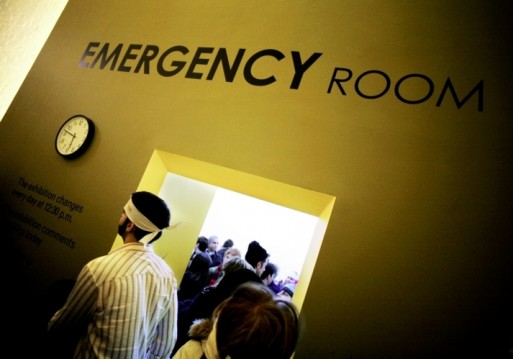
Credit: theatlantic.com
Your loved one wakes up in the middle of the night with excruciating pain. Like most people, you immediately drive him or her to the hospital without a second thought. Working all night, the doctors in the emergency room run tests and give your loved one appropriate treatment. Since you’re not a doctor, you simply step out of the way and let the doctors do their work, never considering the cost.
The next day, your loved one is well enough to go home. But months later, you get the a bill from the hospital for $12,500 for that single night. What’s worse, this does not include the $2,000 charge for medications and blood tests.
If this sounds like a scene out of a dystopian novel, it’s not. This is an all-too-common scenario that thousands of people face every year in the United States. As many patients have discovered, the cost of medical care is frequently hidden until they receive a bill. Doctors, hospitals and even insurance companies often can’t tell a patient exactly how much their care is going to cost until after it’s been administered. This leaves many patients afraid to seek out medical care at all.
One petitioner in Missouri is looking to change this. Faye Maue started a Change.org petition asking Congress to require insurance companies to reveal the final cost of medical care before patients receive treatment. She says she was inspired to get involved when she went through numerous health scares with her 13 year-old daughter.

Credit: torange.biz
Maue’s daughter, Elizabeth, was having fainting spells, and her doctor ordered an electrocardiogram, a test that measures the electrical activity of the heart. Since their family is on a tight budget, Maue called her insurance company and the doctor’s office asking how much the procedure would cost. The best answer she got was, “You will be responsible for 20 percent of the total cost after your deductible is met.”
For patients at the end-of-life or those who have a chronic or terminal illness, vague cost estimates can be financially devastating. These patients are often on a strict regimen of medications and treatments that can easily add up to hundreds of thousands of dollars or more per year. Even with excellent medical insurance coverage, patients are often responsible for a great deal of these costs themselves, depending on copays, deductibles and co-insurance. If the insurance company later denies all or part of the claim, patients are on the hook for the final cost, which often remains a mystery to them until they get the bill.
The average cost of a single day of hospitalization in the United States is about $4,000, according to a report in the New York Times. In some hospitals, that room can cost as much as $12,500 per day. Emergency room visits are even more costly, even when they are for relatively minor issues. For example, at Lenox Hill Hospital in New York City, one man paid $3,356 for five stitches on his finger, says the Times. Nor is his case an anomaly. One woman profiled by the Times paid about $3,000 for six stitches.
Additionally, the number of people going to the emergency room in the United States increased by more than a third between 1997 and 2007. With more people paying visits to the ER, especially those who are already facing chronic and terminal illnesses, the need for transparency grows.

Credit: wikimedia.org
(Courtesy of Thierry Geoffroy)
When a loved one is in pain and needs care, the last thing most of us want to think about is the cost of that care. Yet cost estimates are vital to patients and their families. When patients know what their care will cost, they can ask important questions, make informed decisions and sometimes negotiate a lower price. Further, if costs are given to patients up-front, they have the ability to shop around for care, which may drive medical costs down.

 Should Healthcare Costs Be More Transparent?
Should Healthcare Costs Be More Transparent?



 The Spiritual Symbolism of Cardinals
The Spiritual Symbolism of Cardinals
 Meaning-Focused Grief Therapy: Imaginal Dialogues with the Deceased
Meaning-Focused Grief Therapy: Imaginal Dialogues with the Deceased














